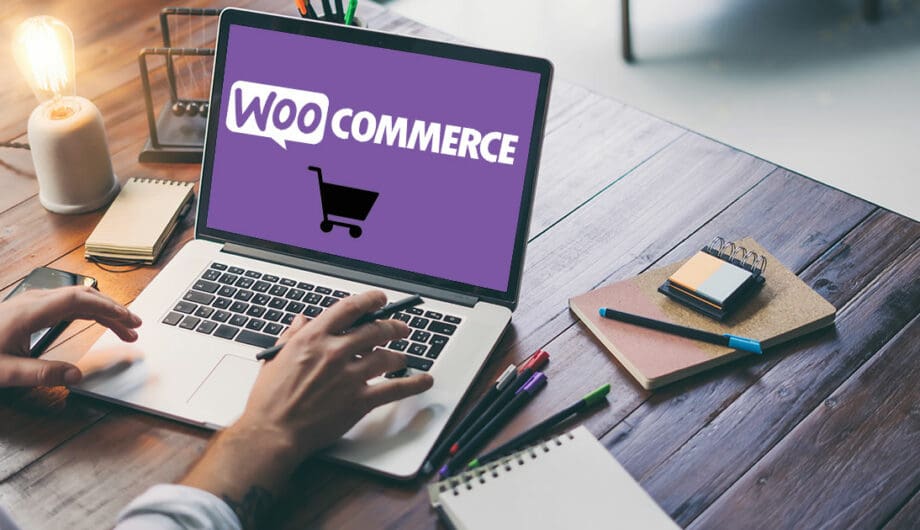
If you’ve ever researched having en e-commerce store, you’ve probably heard about WooCommerce. WooCommerce is an open-source ecommerce plugin for WordPress. It allows you to easily turn your WordPress website into a fully-functional online store, where you can sell anything from physical products to digital downloads. It is one of the most popular e-commerce platforms in the world, with millions of active users. It’s flexible, customizable, and scalable with tons of plugins to extend its potential.
I get a lot of questions about WooCommerce when people are deciding what route to take when starting their e-commerce journey. There are a lot of misconceptions about it, so in today’s post, I’ll go a little deeper into those myths.
Myth #1: WooCommerce is just for small businesses. Independent artisans to storefronts like Craftsy, which gets an estimated 500K-10M visits a month, are using WooCommerce. WooCommerce scales to accommodate businesses of all sizes and complexities. Its robust framework and extensive plugin ecosystem provide the tools almost any e-commerce need, and there is a wide array of developers skilled in customizing and implementing whatever you may need.
Myth #2: It’s not secure enough for online transactions. Security is paramount in eCommerce, and WooCommerce takes it seriously. Built on the secure foundation of WordPress, it benefits from regular updates, a dedicated security team, and a large community actively identifying and patching vulnerabilities. Additionally, various plugins and best practices further enhance security, allowing you to build a store that instills trust in your customers.
Myth #3: Building and managing a WooCommerce store requires coding expertise. While some advanced customization might involve coding, the core WooCommerce experience is remarkably user-friendly. From adding products and customizing your storefront to managing orders and processing payments, the intuitive interface empowers even non-technical users to run their stores effectively. Additionally, the vast marketplace of themes and plugins provides pre-built solutions for most common functionalities, minimizing the need for custom coding.
There are a lot of configurations on your store, which can take some time and thought, but don’t require additional coding. See my WooCommerce series for more details on the basics.
If you need complicated or complex functionality, it could be that you need some custom coding for those.
Myth #4: It lacks the features of expensive proprietary platforms. WooCommerce boasts a powerful feature set covering every essential aspect of eCommerce, including product management, inventory control, order processing, secure payments, shipping integrations, marketing tools, and more. The extensive plugin extensions further expands its capabilities. There’s usually no need to reinvent the wheel with WooCommerce. Whatever you need, there’s probably a plugin already that does it.
Myth #5: You need a dedicated developer to keep it updated and maintained. WooCommerce itself requires minimal maintenance beyond core and plugin updates, which can be managed easily through the interface. While specific development needs may arise depending on your store’s complexity, a vast network of developers and agencies specialize in WooCommerce, offering support and customization options.
Myth #6: It’s not mobile-friendly. In today’s mobile-first world, businesses must cater to on-the-go shoppers. WooCommerce prioritizes mobile responsiveness, ensuring your store looks and functions flawlessly across all devices. Additionally, dedicated mobile apps further enhance the mobile shopping experience, providing features like push notifications and wishlist functionality.
Myth #7: SEO isn’t as good as on dedicated platforms. SEO optimization is important for driving organic traffic to your store. WooCommerce is built with SEO best practices in mind, offering clean URLs, product descriptions, and category structures that search engines can easily crawl and index. Numerous SEO plugins like Yoast SEO further optimize your store, ensuring you reach your target audience effectively.
Myth #8: There’s limited payment gateway integration. WooCommence boasts seamless integration with major payment gateways like PayPal, Stripe, Amazon Pay, and Square offering global reach and diverse payment options to your customers. Additionally, numerous plugin-based integrations cater to specific regions and local payment preferences, ensuring you can accept payments regardless of your location or target audience. Check out the official WooCommerce payment gateway marketplace to see what options there are.
Myth #9: Marketing tools are limited. Marketing is a necessary element for e-commerce success, and WooCommerce doesn’t disappoint. It integrates seamlessly with popular email marketing platforms like MailChimp allowing you to segment your audience, create targeted campaigns, and generate leads effectively. It also has integrations for popular social media tools like Facebook and Pinterest. Additionally, various marketing plugins offer advanced features like abandoned cart recovery and product recommendations, driving conversion rates and encouraging repeat business.
Myth #10: It’s not suitable for dropshipping. Dropshipping offers a low-risk entry point into eCommerce, and WooCommerce is perfectly suited for this model. Numerous plugins connect you with dropshipping suppliers, automate order fulfillment, and manage inventory seamlessly, empowering you to run a successful dropshipping business without holding any physical stock.
Is WooCommerce right for you?
As a WordPress developer, I almost exclusively use WooCommerce when an e-commerce platform is needed. I’ve set up WooCommerce for basic online shops selling physical products, like Ohland Studios, to more advanced stores that allow the purchase of online subscriptions, like with our own Support packages.
Here are some additional questions to ask yourself:
- What is your budget?
- What is your technical expertise?
- What are your product needs?
- How many products do you have?
- What advanced features might you need now or in the future, like subscriptions or memberships?
- How do you intend to manage your online store?
Additional WooCommerce Resources
Amy Masson
Amy is the co-owner, developer, and website strategist for Sumy Designs. She's been making websites with WordPress since 2006 and is passionate about making sure websites are as functional as they are beautiful.
